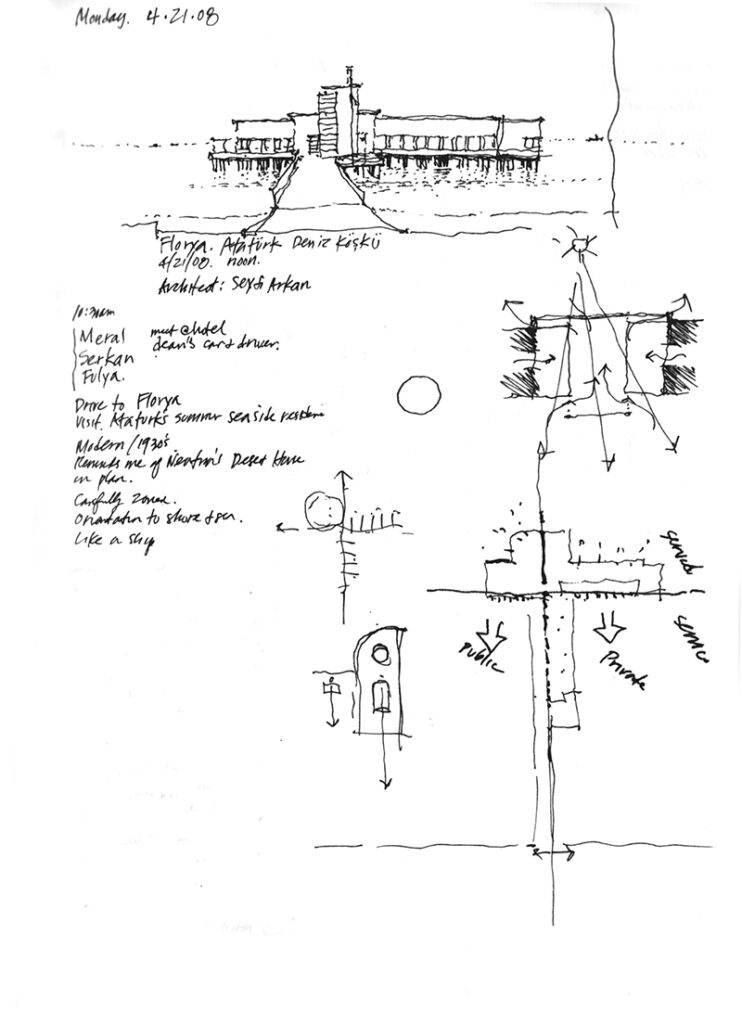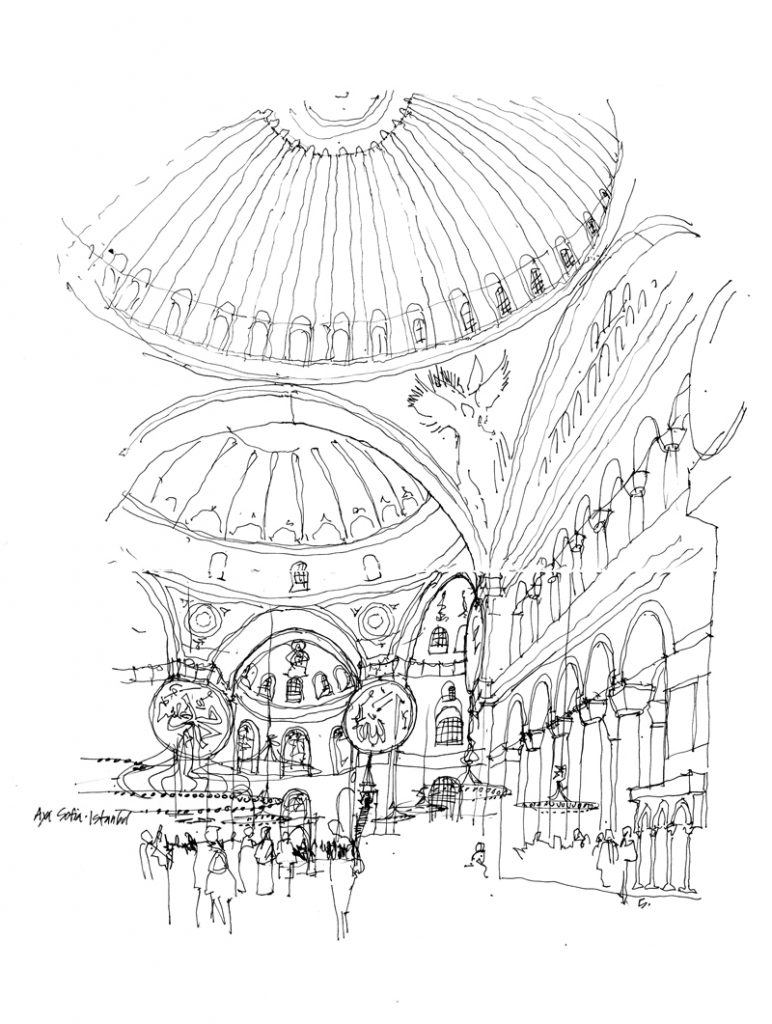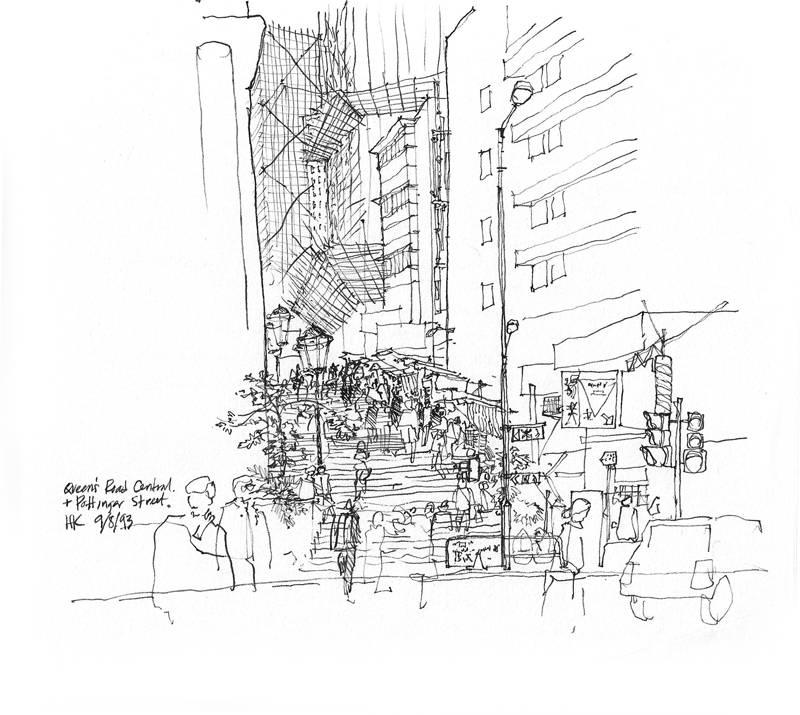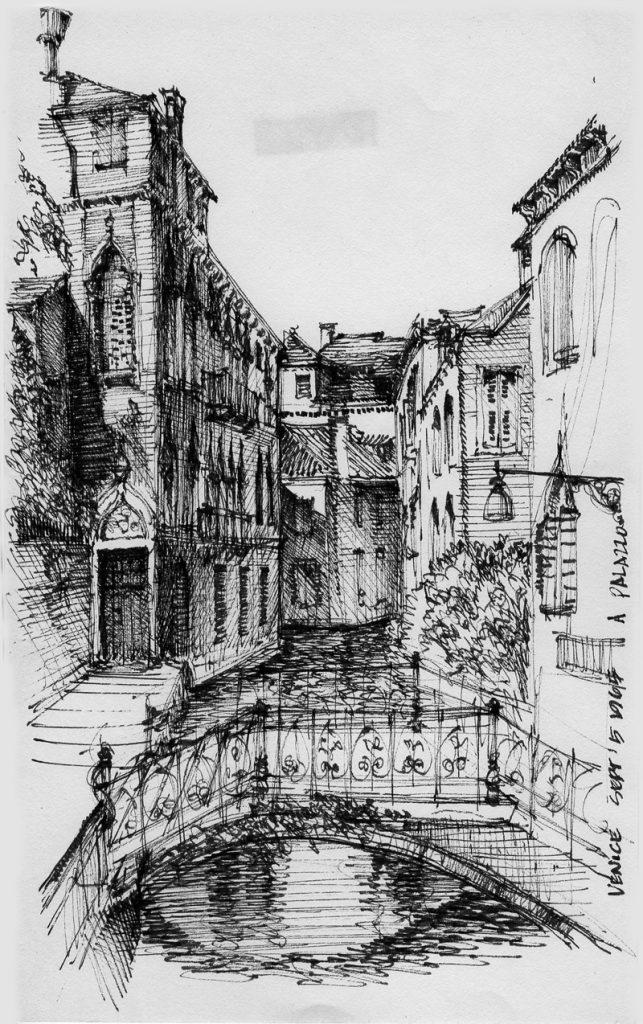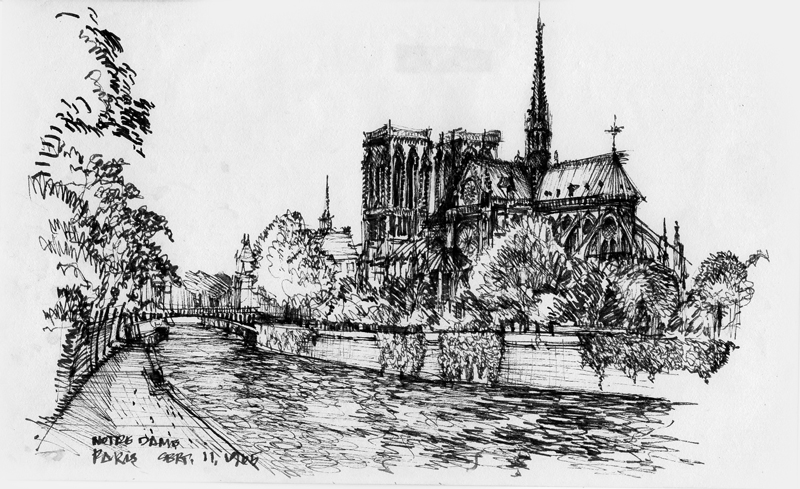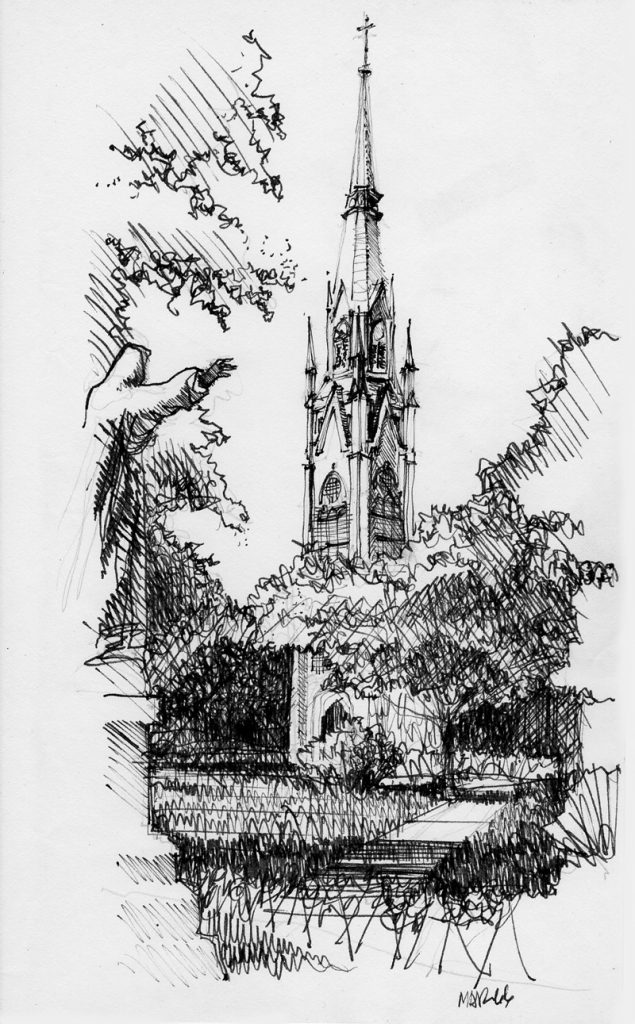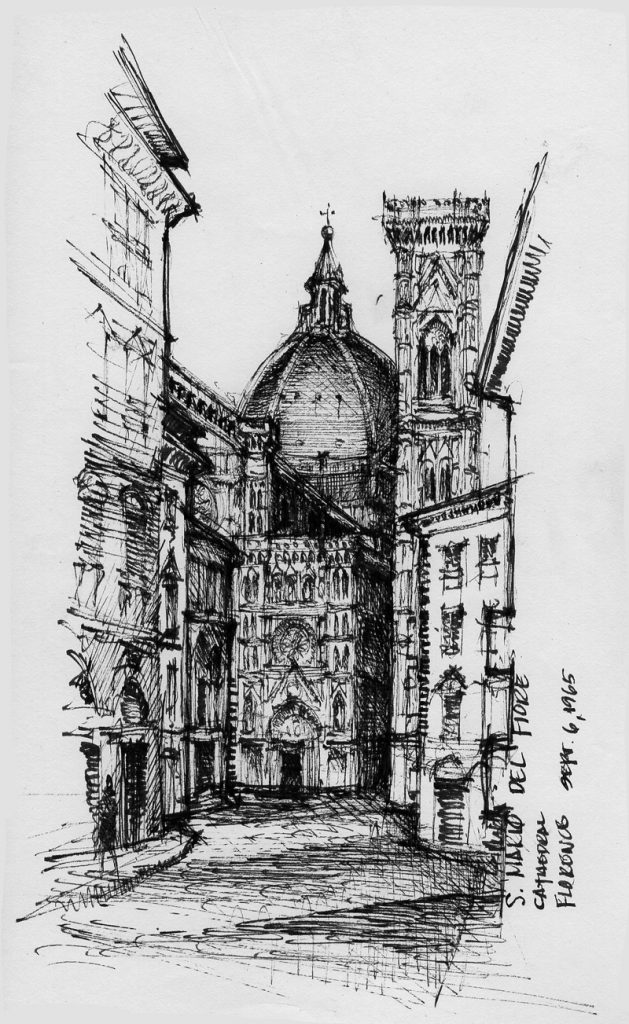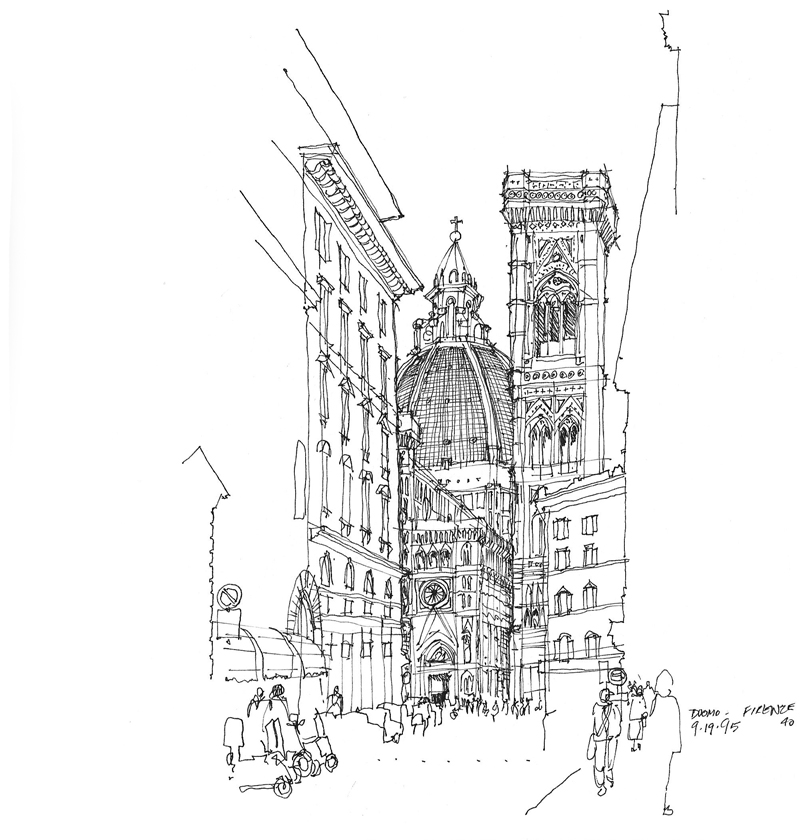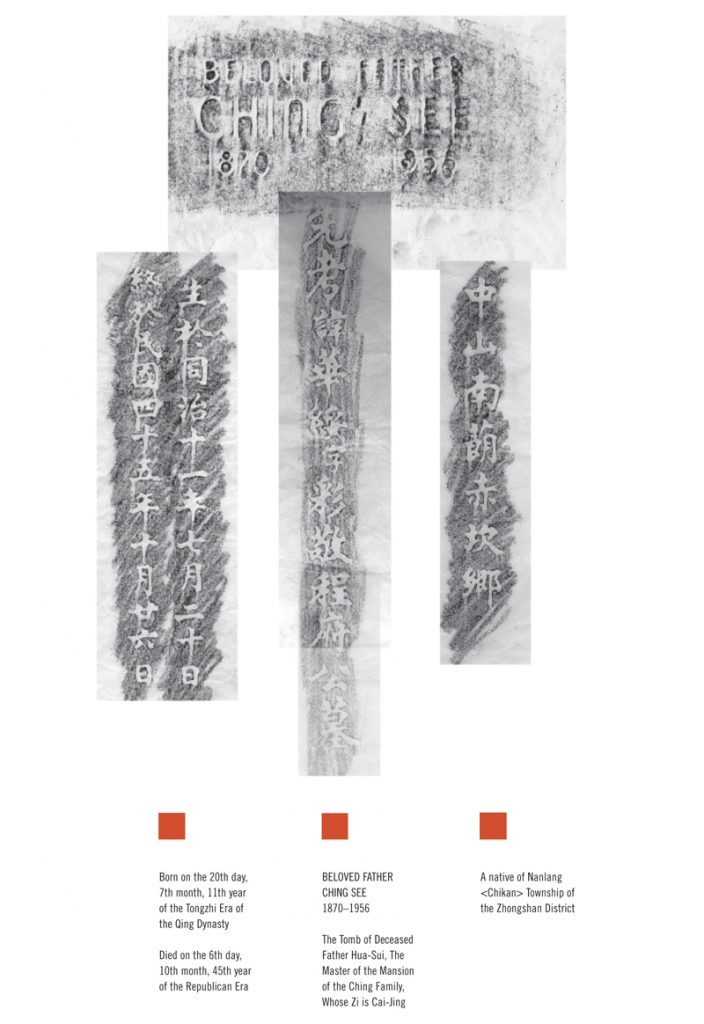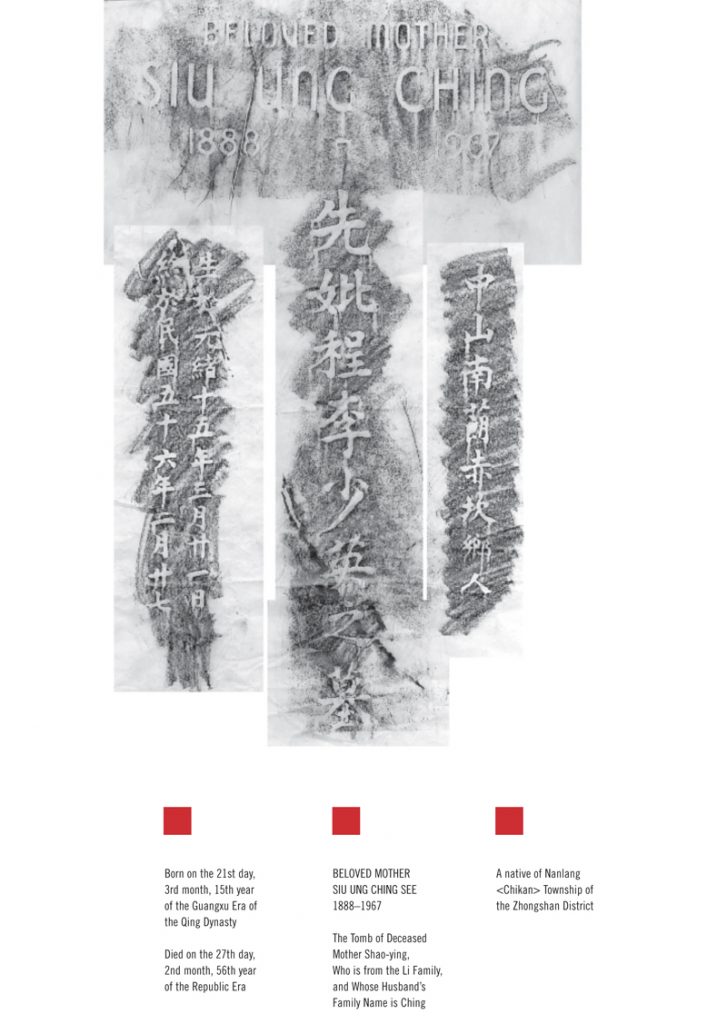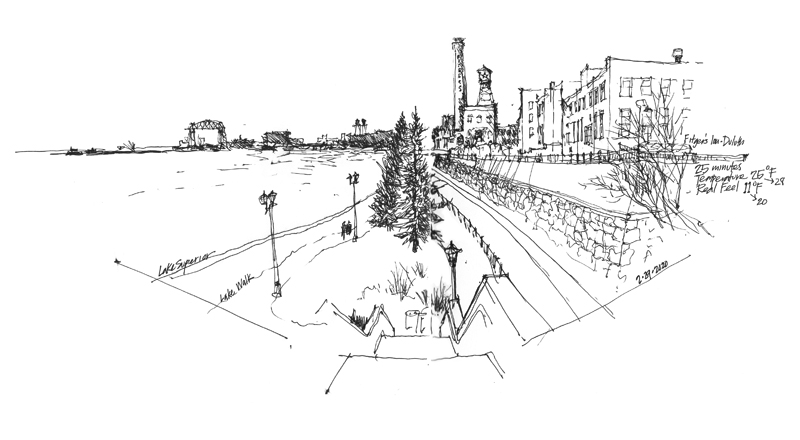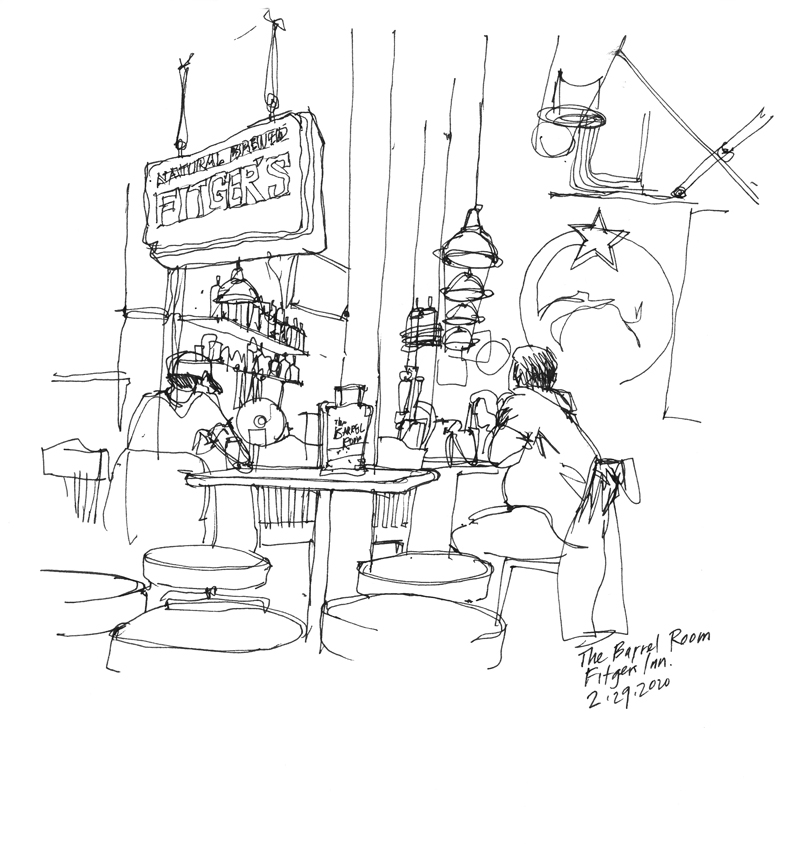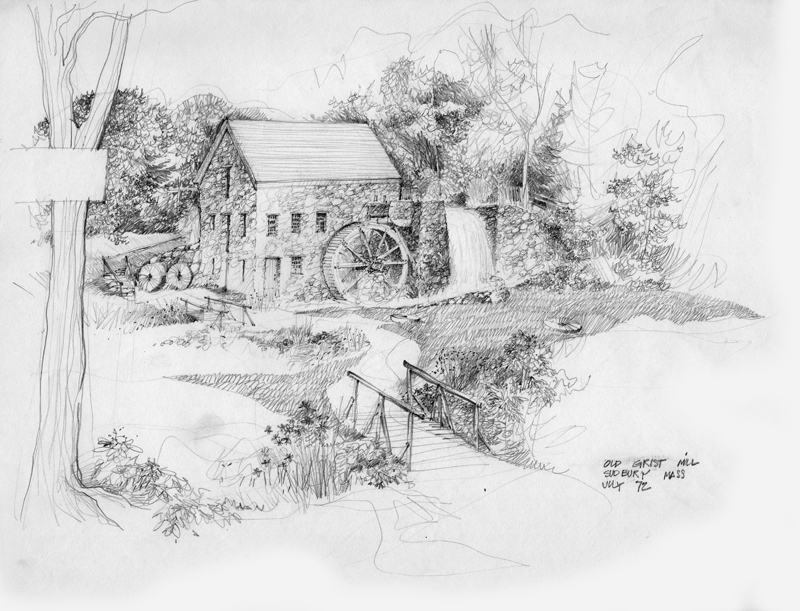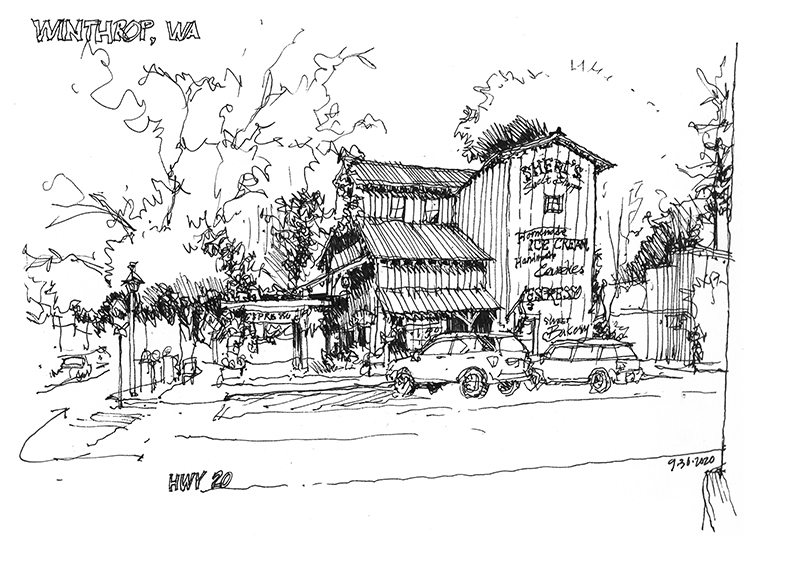
This view shows State Highway 20 approaching from the southwest and turning southeast through the middle of Winthrop, a small town at the confluence of the Methow and Chewuch rivers in the Methow Valley. While the town’s first postmaster, Guy Waring, is considered to be its founding father, the town is actually named after Theodore Winthrop, a 19th-century author who explored the Northwest in the 1850s.
What is striking about Winthrop’s main street is the Old West theme of the storefronts, the result of a westernization program that began in 1972 as Highway 20 through the North Cascades was nearing completion. Designed by architect Robert Jorgenson to promote tourism, the restoration was funded by local merchants along with a generous grant from lumber mill owners Kathryn and Otto Wagner.

